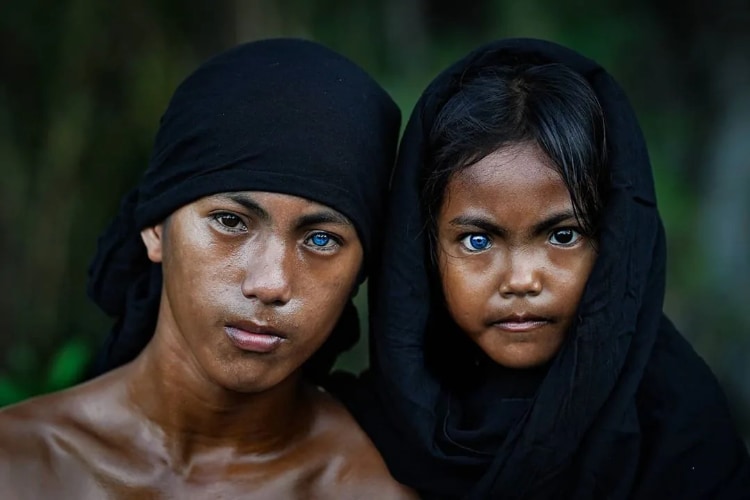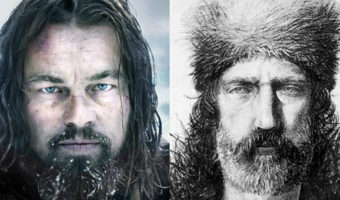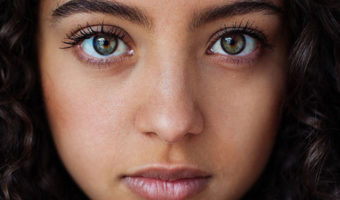Olive-Skinned Indonesian Tribe Has Piercing Blue Eyes, But Why?
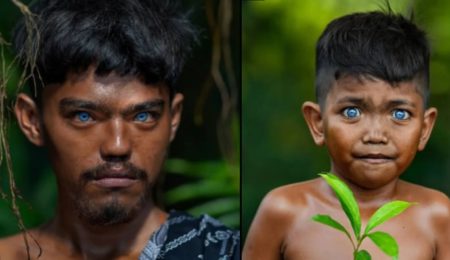
If you choose to travel to Indonesia and arrive on Buton Island, you might encounter a pair of mysterious, enigmatic, multicolored eyes staring at you. Belonging to the gorgeous native islanders, it is a result of one of the most uncommon syndromes that these people are born with. It is called “Waardenburg Syndrome.” Let’s find out more about this tribe and the unusually attractive eyes caused by this disease.
Buton Island Tribe – The History of the Blue-Eyed Villagers of Sulawesi
Indonesia is a distinctive nation with about 17,000 islands in the Indonesian Archipelago. Regarded as the world’s largest island nation, it embraces a hodgepodge of cultures, 700 different languages, and a legion of mini-islands. Buton is one of these islands situated off the southeast coast of the Sulawesi peninsula. The term “Butonese people” refers to a variety of ethnic groups that live here.
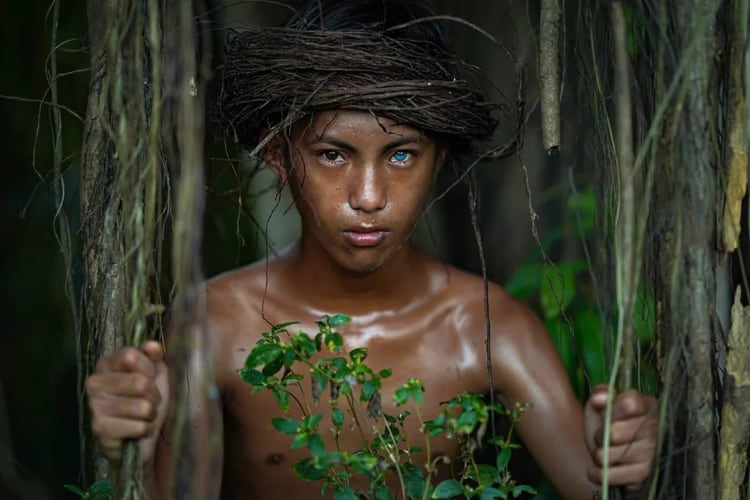
The Butonese are seafarers and merchant mariners. Like the majority of Indonesians, Butonese, too, have black hair and tan or olive skin. These are the physical features that most Southeast Asians, including Indonesians, share. However, in a place called Kendari, a photographer mysteriously found a group of Butonese with unique, dazzling bright blue eyes. Taken by surprise, he published the pics all over Instagram, leading to probing research on this subject.
Tribal researchers speculated that the Butonese might have passed down this unique phenomenon from previous generations. Many believed that their blue eyes were a result of their ancestors’ being married off to Portuguese settlers.
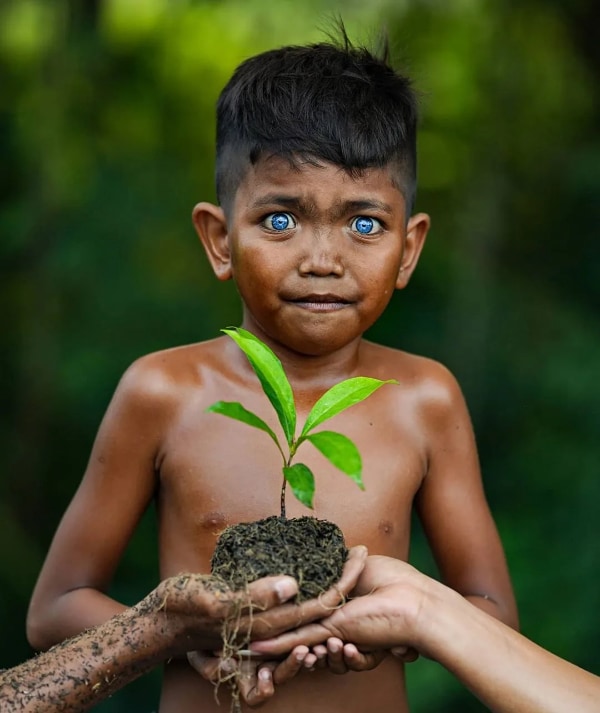
Around the 16th century, Princess Wa Ode Kambaraguna, the daughter of King Siompu II, was wed to a Portuguese sailor named Pitter. The couple had numerous children, of which La Ode Raindabula stood out for being tall, fair-skinned, and belonging to the first generation of Indonesian people to have blue eyes. His fifth/sixth-generation descendants probably inherited some European physical traits. However, the science behind the Buton tribe’s blue eyes goes a long way further. A recent study suggested that Waardenburg Syndrome could be blamed for it.
Waardenburg Syndrome: What is it, and Why Did it Catch The Internet’s Attention?
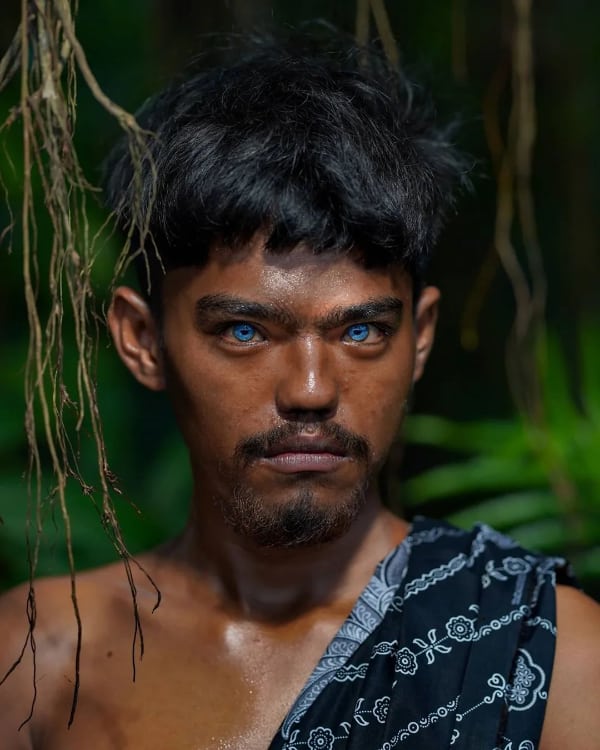
There is no clarity on the exact history of how the Buton tribe developed Waardenburg Syndrome. But, according to the U.S. National Library of Medicine, 1 in 42,000 people worldwide have Waardenburg Syndrome. And following the virality of the Buton tribe pictures, certain studies were conducted to figure out the reason behind pigmented eyes, and it is speculated that Butonese might have developed the Waardenburg Syndrome. After seeing these viral photographs, netizens have assumed that everyone in the Buton tribe has blue eyes. Eventually, it came to light that the majority of Butonese people have typical brown eyes, except for a small subgroup that has developed this heterochromatic symptom.
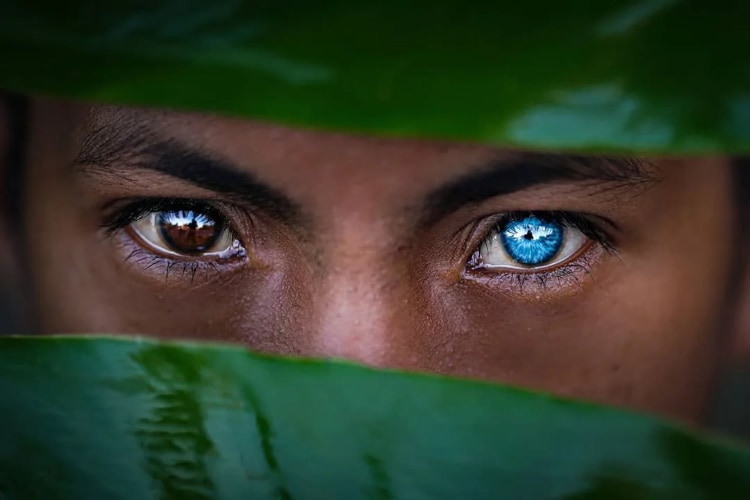
Waardenburg Syndrome – A rare genetic disorder! Associated symptoms and findings can vary from case to case in terms of range and severity. However, distinctive facial abnormalities, hearing loss, unusually diminished pigmentation of the skin, hair, and/or iris of both eyes, lateral displacement of the inner angles of the eyes, and wide nasal bridge are quite common.
A white forelock, early greying of the hair, and heterochromia irides (differences in the color of the two irides or regions of the same iris) are additional examples of pigmentary abnormalities of Waardenburg symptoms.
The Sudden Rise in Popularity of the Buton Tribe
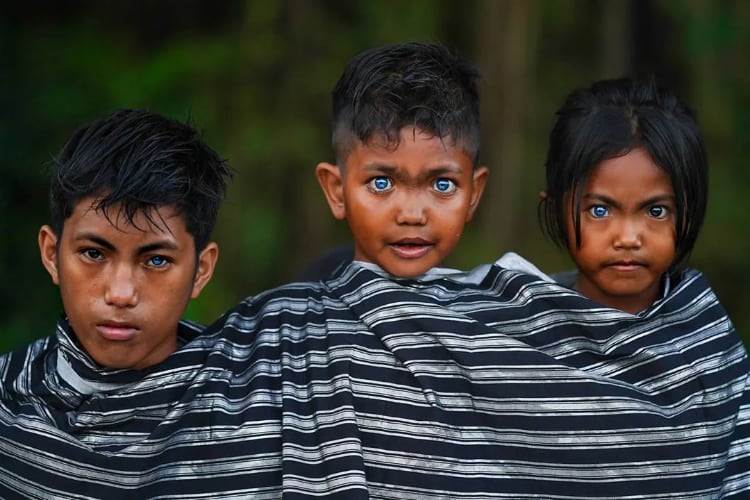
The Buton tribe became a sensational topic of conversation on the Internet following the photos published by a photographer and geologist, Korchnoi Pasaribu. Many netizens took a keen interest in knowing about this particular group of people for their blue eyes, especially in light of the fact that most Asians have brown eyes.
Although this is not the first tribe Korchnoi has encountered, it is the most distinctive. So, despite the fact that he has known them since 2019, he was overjoyed to capture some amazing shots in 2020. He has also created an album of “themed” photographs that speak powerfully about ecology and the topographical distinctions from this topic’s perspective.














